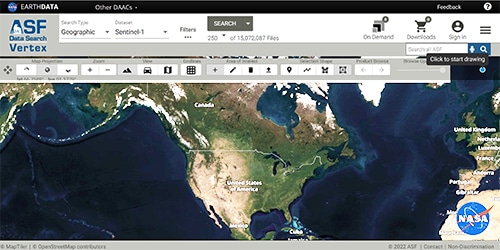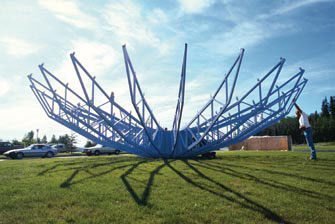10-meter antenna construction underway – Photographed by Jim Coccia
Nettie La Belle-Hamer – Director, ASF
What is now the Alaska Satellite Facility (ASF), started out as a single-purpose imaging-radar receiving station conceived by a small working group formed by the National Aeronautics and Space Administration (NASA) in 1982. The central idea started with the brief success of the Seasat mission in 1978. After Seasat’s premature demise, researchers at NASA and the Geophysical Institute (GI) at the University of Alaska Fairbanks (UAF) speculated what synthetic aperture radar (SAR) could do for polar research. Bill Campbell and Jay Zwally of the Goddard Space Flight Center, among others, convinced NASA to commission the Ice and Climate Experiment study for a dedicated polar ice satellite. Frank Carsey [Jet Propulsion Laboratory (JPL)] and Willy Weeks (GI) examined the benefits of an Alaskan ground station to receive data from foreign satellites, given the lack of funding support for a United States’ mission. From those beginnings, the concept to build a station in Fairbanks, Alaska emerged. The discussions then focused on where to build the receiving station. The idea of reusing the existing Gilmore Creek Satellite tracking station was eliminated due to the 25% increase in antenna mask afforded by locating the antenna at the West Ridge campus of UAF. Keeping in mind that the planned satellites would have no onboard recording capability, the mask dimensions directly determined the data gathering capability of the mission.
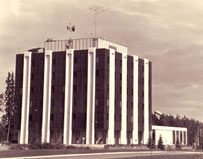
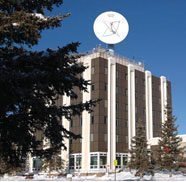
JPL issued a Request for Quotation for the implementation of a receiving ground station (RGS), the Alaskan SAR Facility, at UAF in 1986. Chancellor O’Rourke preferred placing the proposed 10-meter antenna on top of the Natural Science Facility (NSF), which was scheduled to be completed by January 1989. With delays to the NSF building, the Elvey annex expansion project on West Ridge was enhanced with money appropriated by the State of Alaska to include the needed building modifications to host ASF in the GI. (NSF was not completed until September 1995, 4 years after ASF’s first downlink.) The 10-m structure and ancillaries were mounted on the 8th floor (rooftop) of the Elvey building, with the control and signal processing center in the Elvey annex. The annual operating costs associated with this Alaskan receiving station were originally estimated to be under $250 K, including overhead. At that time, the expected data volume for the envisioned station was about 10 minutes of reception per day, compared to the approximately 360 minutes per day ASF currently handles. Later, in the operations phase, data flow was increased due to changing requirements from flight agencies and government sponsors.
In the beginning, ASF was seen as a modest, but valuable, cost-effective addition to the GI’s Alaska-centric research and applications program. NASA entered into Memoranda of Understandings (MOU) with the European Space Agency (ESA) [1986] and the National Space Development Agency of Japan (NASDA) [1988] concerning the acquisition data from ESA’s ERS-1 (European Remote Sensing) satellite and NASDA’s JERS-1 (Japanese Earth Resources) satellite. An agreement between UAF and NASA assigned ASF to carry out some of the responsibilities that NASA was obligated to perform under those MOUs as well as making provisions for possible future MOUs. In both cases, the data were restricted to supporting scientific and technical projects agreed upon between NASA and the appropriate foreign flight agency. No rights were granted for other uses of the data, including uses for commercial or profit-making purposes.
The Elvey construction was completed in 1988. Completion of the Alaska SAR Facility was marked at a ribbon cutting ceremony on April 24, 1991. Later that year, ASF began downlinking ERS-1 data. The expected 10 minutes of data a day quickly grew to over 70 minutes per day for this first satellite. With the addition of new missions, the demand for the use of ASF grew as fast, sometimes faster, than the capabilities.
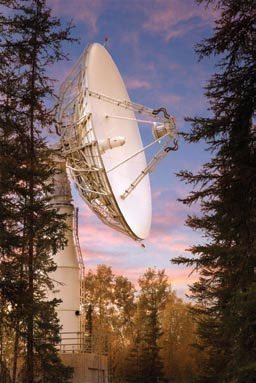
The ASF DAAC and New Missions come on Board
The scope of the original grant to UAF from NASA included tasks related to routine data acquisition and processing of the ERS-1 data, as well as specialized analysis related to research objectives. Addenda to the agreement added JERS-1 and RADARSAT-1 activities. In 1994, a Memorandum of Agreement (MOA) between NASA and UAF formed the ASF Distributed Active Archive Center (DAAC) complementing, without modifying, the existing MOA for ASF. The ASF DAAC is one of eight DAACs funded by NASA to support earth observations from ground-based, in-situ, airborne and satellite sensors. The ASF DAAC processes, distributes, and archives data products as assigned by NASA. Tasking and missions have been added to or deleted from the agreement when deemed appropriate by NASA program managers who manage NASA’s earth science programs, by Goddard Space Flight Center personnel who manage the DAAC contract, and by ASF Management.

A significant example of the modifications made was the addition of funding to install a second antenna in 1994 in anticipation of the launch of the Advanced Earth Observing Satellite (ADEOS) by the Japanese. The 11-m antenna was installed in 1995 on University-owned land within walking distance from the GI. It has served ASF well, even though the original mission ended prematurely when the ADEOS satellite malfunctioned.
With the launch of RADARSAT-1 in November 1995 by NASA on behalf of the Canadian Space Agency, ASF was handling data from the original three satellite missions that spurred the science community into envisioning this facility: ERS-1, JERS-1, and RADARSAT-1. RADARSAT-1 is still going strong after almost 11 years of successful flight, not bad for a predicted 5-year mission! The many achievements of NASA’s Pathfinder RADARSAT-1 Antarctic Mapping Program (RAMP) are examples of the impact the creation and continuation of the ASF vision has on both science and technology (the history of RAMP is discussed at length in Ken Jezek’s article found later in this issue).
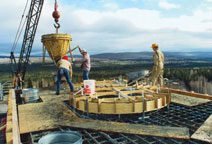
The much anticipated launch of ADEOS-I resulted in ASF simultaneously supporting four missions until the loss of the two Japanese missions. The demise of ADEOS-I and JERS-1, and the decommissioning of ERS-1 with the launch of ERS-2 in 1996, changed the missions ASF supported, but not the general functions. It did not squelch the enthusiasm for L-band SAR data. In November 2002, NOAA appointed UAF as exclusive administrator of a data acquisition, processing, and distribution center to support the Advanced Land Observing Satellite (ALOS) mission. With the successful launch of ALOS by the Japanese in January 2006, ASF’s implementation of the Americas ALOS Data Node (AADN) is moving forward in anticipation of going operational in the fall of 2006.
Changing with the Times
ASF has had its share of controversy, both big and small, through the years. The first was the very public, erroneous accusation in 1984 by a member of Teamsters Local 959 that, by proposing to establish ASF, the University was somehow responsible for NASA’s decision to pull out of the Gilmore Creek tracking station. Since this accusation was in writing and included libelous personal statements about Dr. Juan Roederer, GI Director at that time, it quickly ignited the community, not to mention the lawyers. It was soon handled and the plans moved forward, but like most public controversy, traces of the arguments remain today.
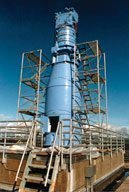
In 1998, ASF underwent a major reorganization that formed the functionally-defined Centers; the essence of which is still in use today. For ASF staff, the reorganization meant a stressful time of wondering how long their jobs would last. For the world outside of ASF, the reorganization served to refocus the facility on its core functions. More recently, cutting 500 trees to clear the antenna mask and plowing the access road for maintenance on the 11-m have been issues that brought ASF to the front page of the Fairbanks Daily News Miner.
What have not necessarily made the papers are the many benefits of a thriving ASF. For example, over 350 terabytes of data processed and archived at ASF has serviced both general science advancements and operational support for NASA, NOAA, USGS, NIC, IIP, and other U.S. government agencies. Advancements in both SAR technology and remote-sensing science applications have lead to both innovative technology and new scientific discoveries.
On the human side, the integration of remote-sensing data into the daily lives of scientists and laymen alike, through extensive outreach activities, is evidence that ASF has touched many lives over the years. The continued utility of the facility, after the loss of the original satellite
missions, speaks highly for the significance of the data and services generated by ASF. ASF is deeply rooted in the University research environment and focused on satellite data products, services, and science support.
We updated our mission to carry us forward and we continue to evolve. To complement ASF’s new mission, a new name, the Alaska Satellite Facility, was announced in the fall of 2003. This has served us well in ASF’s preparations for the future.
This newsletter reflects on the last fifteen years of service at ASF from several perspectives. Many talented people have been gainfully employed at ASF over the years and careers of countless students have been launched. As we progress and adapt to the changing remote sensing environment, we will continue to honor our heritage and serve the science community. We currently at ASF thank those who came before us, the user community, our sponsors and the University for the opportunity to continue this exciting work.



